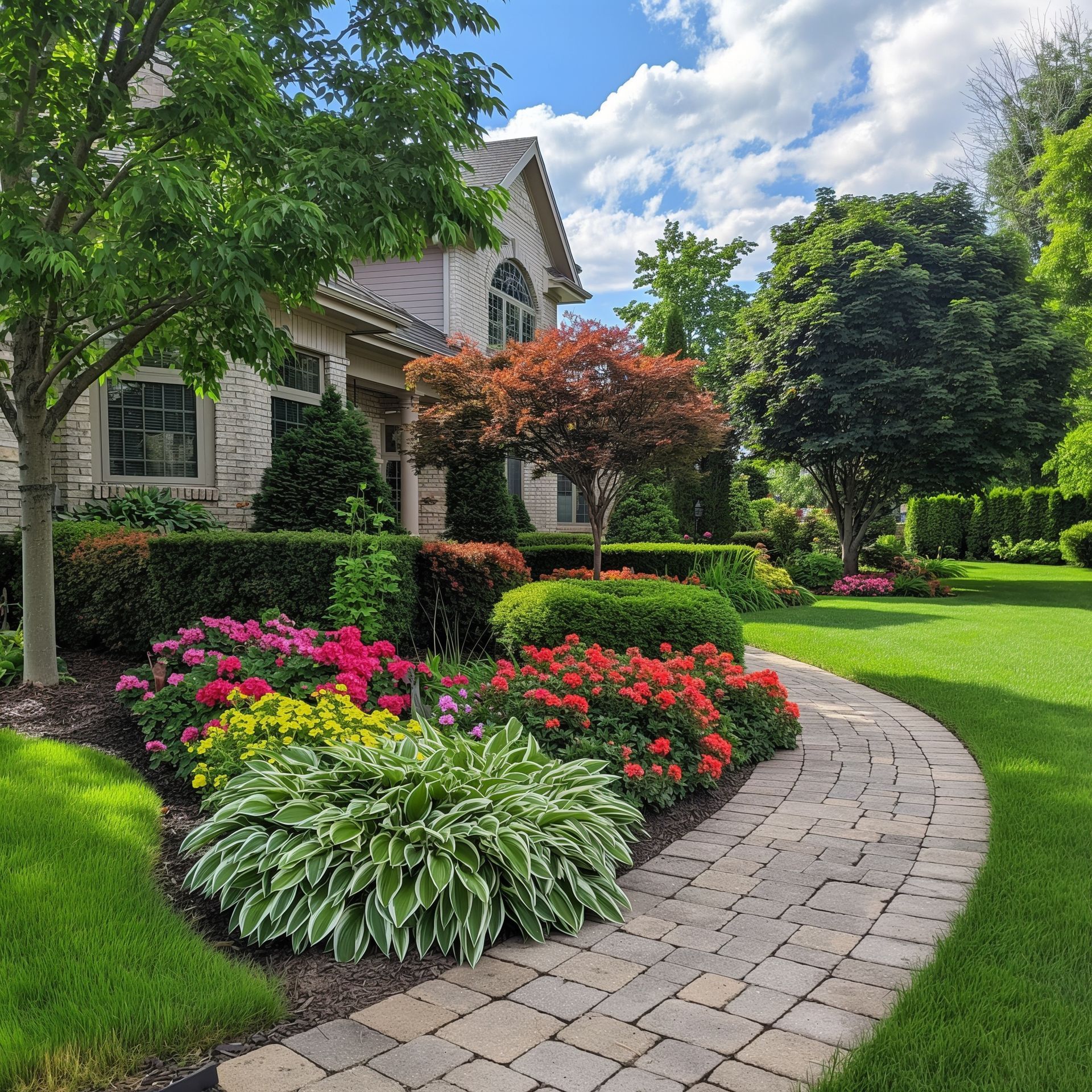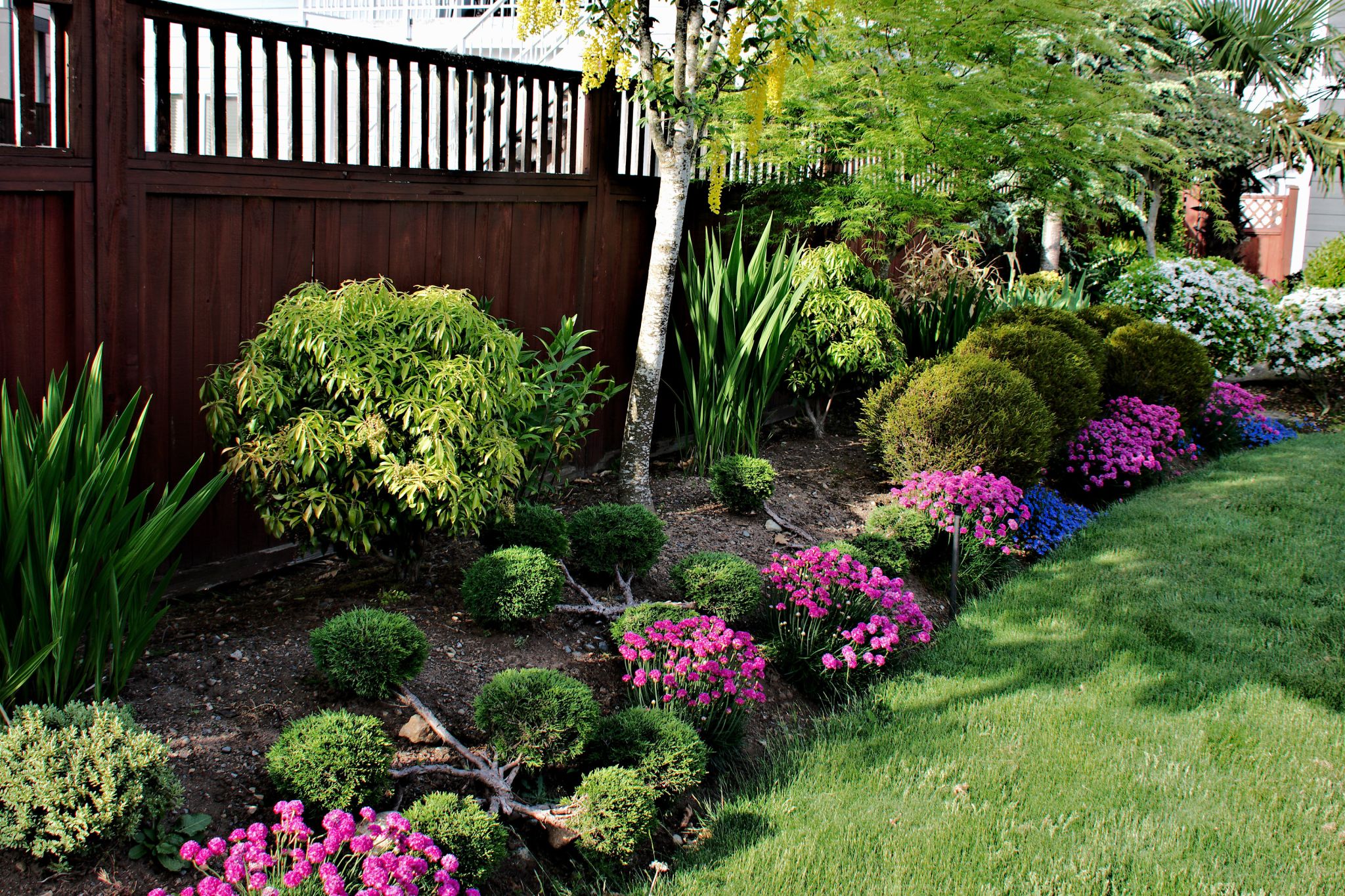Locate the very best Landscaper for Your Lawn Treatment and Layout Requirements
The Ultimate Overview to Gorgeous and lasting Landscape design
In an era where ecological concerns are paramount, the pursuit of lasting landscaping provides an unique chance to balance appeal with ecological duty. By embracing concepts such as the choice of indigenous plants and the implementation of reliable water conservation strategies, home owners can develop visually appealing areas that also add to the wellness of local communities. This overview will certainly check out the details of lasting landscaping, disclosing exactly how thoughtful style options can boost not just the aesthetic worth of exterior areas however likewise their environmental influence. The trip towards a more lasting landscape begins with these foundational principles.
Principles of Lasting Landscaping
The essence of sustainable landscape design hinges on its dedication to ecological stewardship and source conservation. By including environmental principles right into landscape layout, practitioners can produce spaces that are not just visually pleasing yet additionally useful to the atmosphere. This strategy emphasizes the significance of utilizing sources efficiently, reducing waste, and advertising biodiversity.
Trick concepts of lasting landscape design consist of decreasing water intake through reliable irrigation methods and the usage of absorptive materials that promote water seepage. Soil health is likewise extremely important; practices such as composting and mulching boost soil framework and fertility, consequently lowering the demand for chemical fertilizers.
One more essential element is the integration of neighborhood ecosystems, which can be attained through liable plant selection and environment creation. This encourages the existence of useful wild animals, such as pollinators, which add to the ecological balance.
Picking Indigenous Plants
Picking indigenous plants is vital for creating a sustainable landscape that flourishes in consistency with the regional setting. These plants have actually adapted to the regional climate, dirt, and wild animals, making them low-maintenance and durable. By choosing varieties that are indigenous to your area, you can lower the need for fertilizers, pesticides, and extreme watering, thereby conserving resources and reducing environmental effect.
Native plants additionally supply essential environment for neighborhood wild animals, including birds, pests, and various other pollinators. This biodiversity promotes a balanced environment, which can aid regulate pests naturally and advertise healthy and balanced dirt. Native plants typically have deep root systems that help with soil stabilization and erosion control, enhancing the total wellness of your landscape.
When picking native plants, think about variables such as the neighborhood environment, soil kind, and sunlight exposure in your garden. Regional nurseries or preservation organizations can offer important understandings and sources to assist you recognize ideal species. By prioritizing indigenous plants in your landscape design, you add to ecological preservation while delighting in a lovely, lasting garden that calls for less upkeep and supports local wildlife.
Water Preservation Techniques
Executing effective water conservation strategies is vital for lasting landscaping, specifically in regions prone to dry spell or water shortage. One fundamental approach is the application of drip irrigation systems, which deliver water straight to the origin zones of plants, reducing dissipation and drainage. This targeted strategy not only saves water yet likewise promotes healthier plant development.
Mulching is an additional effective technique; natural composts, such as timber chips or straw, assistance keep soil moisture, suppress weeds, and regulate soil temperature level. Additionally, including rain yards can catch and filter rainwater runoff, boosting groundwater recharge while offering a visually pleasing attribute in the landscape.
Making use of xeriscaping principles is likewise helpful. This technique involves designing landscapes that need very little irrigation by picking drought-resistant plants and organizing them according to their water needs. Applying rainwater harvesting systems can significantly minimize reliance on community water supplies. By gathering and using rainwater for watering, home owners can maximize their water use.
Finally, normal maintenance techniques, such as checking for leakages and changing watering timetables based on seasonal weather modifications, further add to reliable water preservation. These methods jointly foster a lasting, beautiful landscape that respects our priceless water sources.
Eco-Friendly Products and Practices
A variety of environmentally friendly materials and techniques can considerably boost the sustainability of landscaping jobs. Making use of native plants is an essential method, as they need less water, fertilizers, and pesticides, promoting biodiversity and lowering maintenance initiatives. Incorporating permeable paving materials permits much better water absorption, decreasing runoff and promoting groundwater recharge.
Recovered or reused products, such as blocks, rocks, and wood, can be creatively utilized in paths, wall surfaces, and boundaries, lowering the demand for brand-new resources. Furthermore, sustainably sourced compost, like timber chips or straw, acts as an exceptional ground cover that helps preserve moisture and reduce weeds.

Composting organic waste and utilizing natural plant foods not just enhance the dirt yet also decrease the reliance on chemical items. By important source integrating these green products and practices, landscape design jobs can achieve both elegance and sustainability, making sure a harmonious relationship with the setting while improving the overall appeal of exterior rooms.
Upkeep for Long-Term Health
Sustainable landscape design flourishes on recurring upkeep methods that ensure the long-lasting wellness of both environments and plants. Regular care not just enhances visual appeal but likewise advertises eco-friendly balance, promoting resilience versus pests and diseases.
One trick element of upkeep is appropriate watering techniques. Implementing drip irrigation or rain harvesting systems preserves water while providing appropriate wetness to plants. Furthermore, mulching assists maintain soil dampness, reduce weeds, and boost soil health.
Soil monitoring is crucial; regular testing can determine nutrient shortages, permitting the application of organic plant foods or compost - Landscaping West Laurel MD. This enhances dirt structure and encourages useful microbial task

Finally, integrating native plants into your landscape lessens maintenance requirements and cultivates neighborhood biodiversity. Landscaping. Indigenous types are well-adapted to neighborhood conditions, needing much less water and less chemical inputs
Verdict
In verdict, stunning and sustainable landscape design is accomplished through the thoughtful assimilation of indigenous plants, reliable water preservation methods, and environmentally friendly materials. These techniques use this link not only enhance the aesthetic charm of exterior atmospheres but likewise foster biodiversity and promote dirt health and wellness. content By prioritizing environmental stewardship, landscapes can grow, sustaining neighborhood environments and adding to total environmental balance. Adopting these principles makes certain that outdoor areas remain resilient and lively for future generations.
By accepting principles such as the choice of indigenous plants and the implementation of reliable water preservation strategies, home owners can produce aesthetically attractive spaces that also add to the health of neighborhood environments.Implementing reliable water preservation methods is necessary for sustainable landscape design, especially in regions susceptible to dry spell or water shortage. Utilizing indigenous plants is an essential practice, as they require less water, plant foods, and chemicals, advertising biodiversity and reducing maintenance initiatives. Applying drip watering or rain harvesting systems preserves water while offering appropriate moisture to plants.In verdict, beautiful and sustainable landscape design is attained via the thoughtful combination of native plants, efficient water preservation methods, and eco-friendly products.